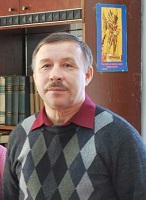Evangelical Christian (Baptist) communities in the People’s Republic of Tuva (1926-1932)
DOI:
https://doi.org/10.25178/nit.2019.1.2Keywords:
Baptist; Baptism; Protestantism; People’s Republic of Tuva; Tuva; Tuvans; Tuvan history; Department of State Internal Political Security; Soviet foreign colony; Christomol; anti-religious committeeAbstract
The article analyzes the history of the spread of Baptism in Tuva during the period of the Tuvan People's Republic. The relevance of the study is due to an increase in the activity of contemporary Evangelical Christians (Baptists) in Russia, including Tuva. In terms of both public activity and numbers, Baptists have surpassed Old Believers, which have traditionally been better studied in Tuva. During the post-Soviet years, the community saw a conversion of quite a number of ethnic Tuvans.
1926-1932 was a time of comparative freedom for Evangelical Christians (Baptists) in Tuva. The protestant movement had a well-designed and sustainable structure, which included two religious communities – Azyutsky and Uspensky, wherein Baptists and other groups of Evangelical Christians coexisted well, also finding common ground with Buddhists and Old Believers. However, their relations with Orthodox communities were rather strained.
Baptists played a significant role not only in religious but also in the political life of the former Uriankhai krai. By displaying their economic success, they manage to convert even former Red partisans, Communists and Komsomol members. Their preaching had a comparative success among the Tuvan population.
The influence Baptists had was largely based on their serious approach to the education of young people. Strict adherence to the religious principles of many generations of Baptists consolidated their reputation as people of word and deed. Young people were instilled with a sense of pride in belonging to the community. Among the population, the Baptists conducted intensive preaching, acting via local “strongholds”.
Baptists’ activity in Tuva was suppressed due to enhanced anti-religious struggle and collectivization in the USSR, which spilled over into the Soviet community on the territory of the PRT.
New historical sources, including those previously classified (reports of the Department of State Internal Political Security of the PRT, etc.), are now being introduced into scientific circulation.
References
Badmayev, A. A., Adygbai, Ch. O., Burnakov, V. A. and Mansheev, D. M. (2006). Protestantizm i narody Iuzhnoi Sibiri: istoriia i sovremennost' [Protestantism and the peoples of southern Siberia: history and modernity]. Novosibirsk, Redaktsionno-izdatel'skii tsentr NGU. 160 p. (In Russ.).
Bol'shaia Sovetskaia Entsiklopediia [Great Soviet Encyclopedia] (1931). Moscow, 16-ia tipografiia tresta «Poligrafkniga». Vol. 23. 837 p. (In Russ.).
Weber, M. (1990) Izbrannye proizvedeniia [Selected works]. Moscow, Progress. 808 p. (In Russ.).
Istoriia Tuvy [The History Of Tuva] (2007) / ed. by V. A. Lamin. Novosibirsk, Nauka. Vol. 2. 430 p. (In Russ.).
Krzyzhanovskii, R. (2011) Kto takie baptisty? [Who are Baptists?] Odessa, KhGEU. 142 p. (In Russ.).
Speranskaia, E. S. and Leonenkova, I. R. Baptisty [Baptists]. Pravoslavnaia entsiklopediia pod redaktsiei patriarkha Moskovskogo i vseia Rusi Kirilla [online] Available at: www/pravenc.ru/teht/77510.html (access date: 11.12.2018). (In Russ.).
Religiovedenie [Religious studies] (2002): a textbook and basic dictionary in religious studies / ed. by I. N. Iablokov. Moscow, Gardarika. 536 p. (In Russ.).
Storozhenko, A. A. (2004) Staroobriadchestvo Tuvy vo vtoroi polovine XIX — pervoi chetverti XX vv. [Old Believers of Tuva from the second half of 19th to the first quarter of 20th centuries]: Thesis of Diss. … Candidate of History. Kyzyl. 23 p. (In Russ.).
Tatarintseva, M. P. (2006) Staroobriadtsy v Tuve [Old believers in Tuva]. Novosibirsk, Nauka. 214 p. (In Russ.).
Published
How to Cite
Mollerov N. M. Evangelical Christian (Baptist) communities in the People’s Republic of Tuva (1926‑1932). The New Research of Tuva, 2019, no. 1 [on-line] Available at: https://nit.tuva.asia/nit/article/view/827 (accessed: ). DOI: 10.25178/nit.2019.1.2
Issue
Section

Author(s) license holder(s) grant rights for their work to the journal (grantee of a license) under the simple non-exclusive open license in accordance with Art. 1286.1 «Open license for a research work, work of literature or fine arts», Civil Code of the Russian Federation.
New Research of Tuva publishes articles under the Creative Commons Attribution-NonCommercial license (CC BY-NC).
Since it is an open license, author(s) reserve the right to upload the article to their institutional repository, submit it to another journal (if it allows republications), or republish it on their own website (in full, or in part).
However, several conditions apply here:
a) The republished version must always contain the name(s) and affiliation(s) of the author(s), the original title and the hyperlink to the original version on the New Research of Tuva website;
b) It must be in open access, free of charge, and no category of readers must be in any way whatsoever advantaged over general readership.
c) should the contribution be submitted elsewhere by its author(s) without substantial modification (30% or more of original text unchanged), the body of the article should contain a disclaimer that the original version was published in New Research of Tuva (with a link to the respective page)
The CC-BY-NC is a non-revocable license which applies worldwide and lasts for the duration of the work’s copyright.









